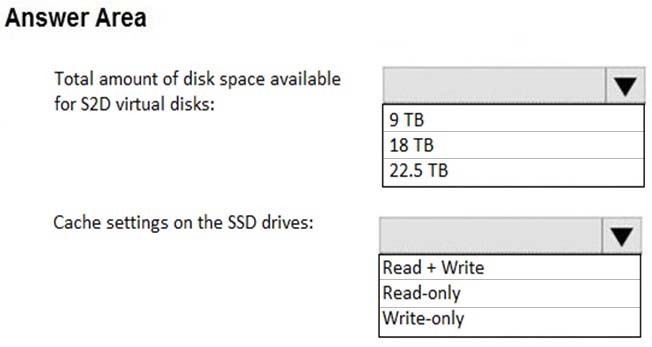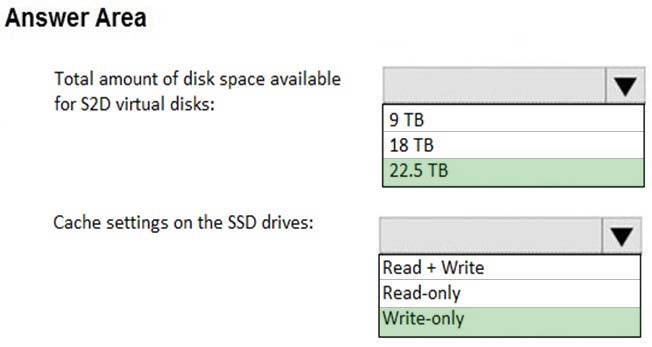

HOTSPOT -
You have three servers named Server1, Server2, and Server3. The servers are the members of a failover cluster named Cluster1.
You attach the following local disks to each server:
✑ Three 512-GB NVMes
✑ Three 1-TB HDDs
✑ Three 1-TB SSDs
You run Enable-ClusterStorageSpacesDirect.
What is the result of the configuration? To answer, select the appropriate options in the answer area.
NOTE: Each correct selection is worth one point.
Hot Area:

xziomal9
Highly Voted 5 years, 6 months agolbs
5 years, 1 month agolbs
5 years, 1 month agoVeiN
Highly Voted 5 years agoFaisalJ
Most Recent 4 years, 7 months agoSham
4 years, 9 months agoLeongCC
4 years, 10 months agojam7272
4 years, 10 months agopanda
4 years, 10 months agoSabarazzzdev
4 years, 10 months agoRobbie
4 years, 12 months agoCraig92866
5 years, 1 month agoCCNP_Student
5 years, 2 months agocmykel
5 years, 2 months agoThermal
5 years, 3 months agoRobuk360
5 years, 4 months agove22
5 years, 4 months agoIzhar
5 years, 5 months agoNjamajama
5 years, 6 months agoWanderlusting
5 years, 5 months agoWanderlusting
5 years, 5 months ago